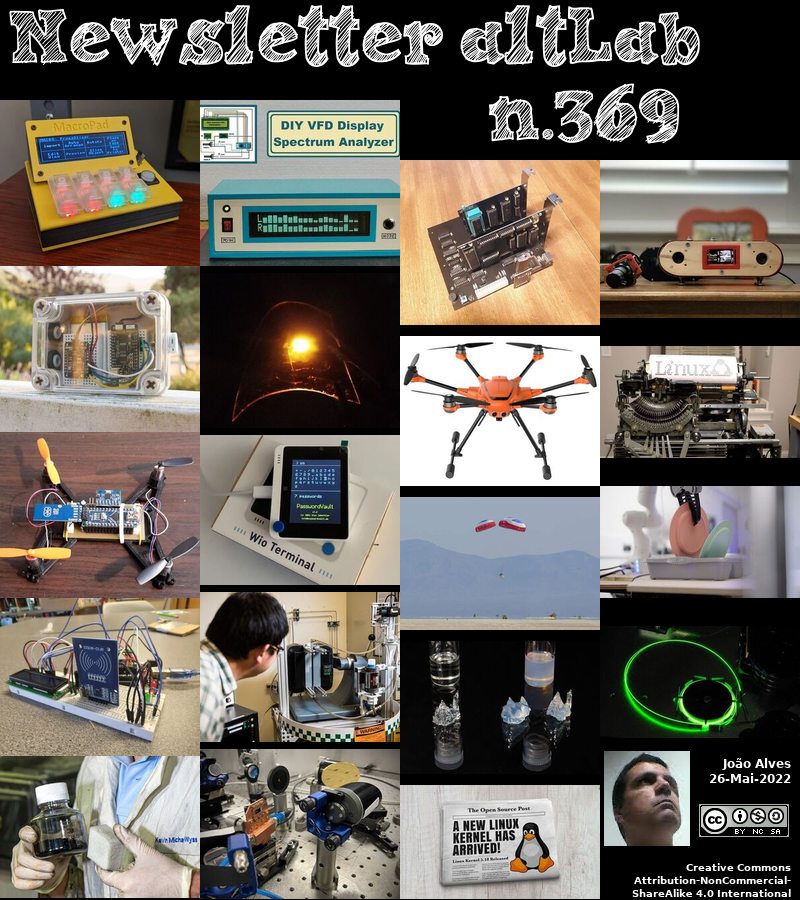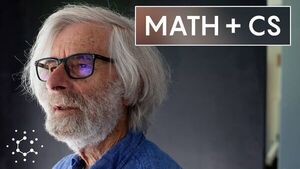2022-05-26 - Nº 369
Editorial
Esta é a Newsletter Nº 369 que se apresenta com o mesmo formato que as anteriores. Se gostar da Newsletter partilhe-a!
Todas as Newsletters encontram-se indexadas no link.
Esta Newsletter tem os seguintes tópicos:
Faz hoje anos que nascia, em 1667, o matemático francês Abraham De Moivre. Ele foi pioneiro no desenvolvimento da trigonometria analítica e na teoria da probabilidade. Publicou The Doctrine of Chance em 1718. A definição de independência estatística aparece neste livro, juntamente com muitos problemas com os dados e outros jogos. Também investigou estatísticas de mortalidade e o fundamento da teoria das anuidades. Morreu na pobreza, e previu correctamente o dia da sua própria morte. Descobriu que dormia 15 minutos mais cada noite e a partir daí a progressão aritmética, calculou que morreria no dia em que dormisse durante 24 horas.
Faz também hoje anos que nascia, em 1814, o soprador de vidro alemão Heinrich Geissler. Ele conhou o nome da bomba de vácuo Geissler (mercúrio) e o tubo Geissler. Com o baixo vácuo sem precedentes (1/100 mm de mercúrio) que produzia em tubos de vidro selados, colocou à disposição dos primeiros físicos uma ferramenta valiosa para estudar o efeito da electricidade sobre os vestígios de gases restantes. Estes produziram estudos mais detalhados sobre a estrutura da matéria.
Faz igualmente hoje anos que nascia, em 1867, o químico norte-americano Julius Stieglitz. Ele interpretou o comportamento e a estrutura dos compostos orgânicos à luz da teoria da valência e aplicou os métodos da físico-química à química orgânica. A sua investigação em campos como os rearranjos moleculares e a estereoquímica ajudou a lançar as bases da físico-química orgânica. Durante a Primeira Guerra Mundial, aconselhou o governo sobre como superar a escassez de produtos químicos provenientes da Alemanha. Foi muito activo no desenvolvimento de gases, corantes e químicos de guerra para as forças militares americanas durante a Primeira Guerra Mundial. Foi presidente do comité sobre drogas sintéticas do Conselho Nacional de Investigação.
Por fim, faz hoje anos que nascia, em 1874, o aviador e designer de aviões francês Henri Farman. Ele desenvolveu os ailerons (1908) para resolver os problemas extremamente difíceis e perigosos do controlo lateral. A sua inovação veio posteriormente a ser generalizada em todos os aviões. Os seus primeiros passos na concepção de aviões começaram em 1907 quando encomendou o seu próprio avião incorporando as suas modificações de concepção de um diedro nas asas e a redução da cauda para um único avião. Estas modificações intuitivas e não científicas foram o início de uma longa carreira na qual Farman diagnosticou e resolveu uma miríade de problemas estruturais e de controlo de aeronaves. O Farman "Golias" foi o primeiro avião de passageiros de longa distância, começando os voos regulares Paris-Londres em 8 de Fevereiro de 1919.
E nesta semana que passou foi lançada a versão final do Kernel Linux 5.18. Foram feitas optimizações no ficheiros de cabeçalhos do kernel que permitem uma compilação mais rápida. Para que se possa compilar o Kernel é agora necessário um compilador com o C11 Standard. Foram feitas melhorias ao nivel do filesystem Btrfs. Foi introduzido suporte para o Raspberry Pi Zero 2 W. Foram também introduzidas melhorias nos processadores RISC-V, AMD EPYC, MIPS e ARM.
Na Newsletter desta semana apresentamos diversas noticias, artigos científicos, projetos de maker e alguns vídeos interessantes. É apresentada a revista Hackspace nº55 de Junho e a revista MagPi Nº118 de Junho.
 João Alves ([email protected])
João Alves ([email protected])
O conteúdo da Newsletter encontra-se sob a licença  Creative Commons Attribution-NonCommercial-ShareAlike 4.0 International License.
Creative Commons Attribution-NonCommercial-ShareAlike 4.0 International License.
Novidades da Semana

Linux Kernel 5.18 Released, This is What’s New
"Ahoy, a brand new Linux kernel release is now available to download. Linus Torvalds, creator of Linux, announced the release of Linux 5.18 in a short email to the Linux Kernel Mailing List, writing: “No unexpected nasty surprises this last week, so here we go with the 5.18 release right on schedule”. Ahh, I do approve of punctuality, monsieur Torvalds. Predictability and schedule makes writing these blog posts much easier—Wait, I’m lying: I always leave these posts until the last minute. What’s new? Let’s find out together!" [...]
Outras Notícias
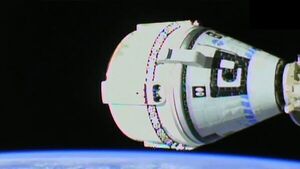
Boeing’s Starliner Spacecraft Completes Successful Docking to Space Station
"Boeing’s [NYSE: BA] CST-100 Starliner spacecraft made its first connection to the International Space Station at 7:28 p.m. Central Time (0028 UTC) today to complete a primary goal of the program’s Orbital Flight Test-2 (OFT-2). With no astronauts on board, Starliner’s autonomous systems and ground controllers in Houston guided the vehicle through a carefully choreographed series of maneuvers to steadily bring the Starliner closer to the orbiting laboratory before docking. Astronauts aboard the space station monitored Starliner throughout the flight and at times commanded the spacecraft to verify control capabilities. “Today’s successful docking of the Starliner is another important step in this rehearsal for sending astronauts into orbit safely and reliably,” said Boeing Defense, Space & Security President and CEO Ted Colbert. Launching atop a human-rated United Launch Alliance Atlas V rocket on May 19, 2022, from Cape Canaveral Space Force Station in Florida, Starliner spent its first hours in space performing a series of system demonstrations allowing mission managers to verify the spacecraft was healthy and able to maneuver safely. After docking, the Starliner recharged its batteries using solar arrays located on the service module." [...]
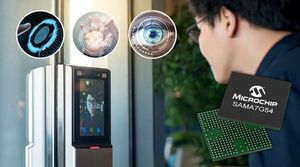
New 1 GHz SAMA7G54 is the First Single-Core MPU with MIPI CSI-2 Camera Interface and Advanced Audio Features
"Based on Arm® Cortex®-A7 processor, Microchip’s new MPU combines high performance with low power consumption. The embedded market has a need for higher performing, yet lower power artificial intelligence (AI) solutions that can be deployed at the edge, where power consumption is often at a premium. AI solutions often require advanced imaging and audio capabilities which are typically found only on higher performing multi-core microprocessors that, unfortunately, also consume much more power. To offer developers access to those higher performing peripherals without sacrificing power consumption, Microchip Technology Inc. (Nasdaq: MCHP) today announces the SAMA7G54 Arm Cortex A7-based MPU running up to 1 GHz. The SAMA7G54 includes both a MIPI® CSI-2 camera interface and a traditional parallel camera interface enabling developers to design low-power stereo vision applications with more accurate depth perception. Microchip is committed to maintaining the lowest power MPU portfolio in the market." [...]

STMicroelectronics’ high-bandwidth common-mode filters ensure signal integrity in multi-gigabit serial interfaces
"New common-mode filters from STMicroelectronics have an extremely wide differential bandwidth of 10.7GHz to protect antenna sensitivity in adjacent wireless circuitry from the latest serial digital interfaces. The 2-channel ECMF2-40A100N10 and 4-channel ECMF4-40A100N10 are compatible with high-speed interface standards including USB 3.2 Gen 2, USB4, HDMI 2.1, and DisplayPort. With their low serial resistance of just 3Ω, which minimizes eye-diagram distortion, the filters preserve signal integrity. The filters deliver deep common-mode attenuation (Scc21) from 2.4GHz to 7GHz, reaching -21dB at 5GHz, and effectively prevent interference with Wi-Fi® and Bluetooth® receivers. In addition to tackling antenna desensitivity issues, the filters can be used for general interface-noise reduction to ensure compliance with electromagnetic compatibility (EMC) regulations. ESD protection up to ±9kV (contact discharge) and ±20kV (air discharge) is also built-in, which exceeds IEC 61000-4-2 level 4." [...]

Renesas Will Demonstrate the First Working Silicon Based on the Recently Debuted Arm Cortex-M85 Processor
"Microcontroller Leader to Showcase Performance, High Integration and Security Advances at Embedded World 2022 Exhibition and Conference Renesas Electronics Corporation (TSE:6723), a premier supplier of advanced semiconductor solutions, today announced that it will present the first live demonstration of a microcontroller (MCU) based on the recently announced Arm® Cortex®-M85 processor. The demonstration will take place in the Renesas booth - Hall 1, Stand 234 (1-234) at the Embedded World 2022 Exhibition and Conference in Nuremburg Germany from June 21-24. Renesas introduced the RA (Renesas Advanced) Family of Arm Cortex-M based MCUs in October of 2019, entering the general-purpose Arm-Cortex-M market with a robust and feature rich family of flash-based MCUs. In roughly 30 months, Renesas has quickly taken a leadership position, introducing 17 MCU groups encompassing well over 200 individual parts. In addition, Renesas has developed a robust ecosystem of partners providing customers with comprehensive solutions for IoT, AI/ML, industrial automation, medical, building automation, home appliance and multiple other applications. “As a lead partner with Arm, we are proud to be the first to demonstrate an MCU based on the high-performance Cortex-M85 processor, a clear example of the momentum that we have built in the Arm ecosystem,” said Roger Wendelken, Senior Vice President in Renesas’ IoT and Infrastructure Business Unit." [...]
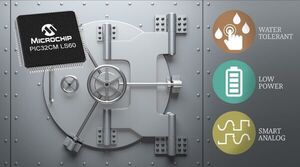
Industry’s First Microcontroller Integrated with a Robust Secure Subsystem and Arm® TrustZone® Technology
"Microchip releases Arm Cortex®-M23 based microcontroller supported with secure key provisioning solutions Security threats are growing in complexity and causing product development challenges in the Internet of Things (IoT), consumer, industrial, medical and other markets. It is imperative that these products have strong embedded security while also offering low power consumption for longer battery life. Microchip Technology Inc. (Nasdaq: MCHP) today announces the release of the industry's first microcontroller (MCU) to combine a secure subsystem and Arm® TrustZone® technology in a single package. The PIC32CM LS60, which integrates Microchip's Trust Platform secure subsystem, makes it easier to develop end products using one microcontroller rather than two or more semiconductor chips. Now, designers can go to one trusted source to find a 32-bit MCU that is designed to protect products and the end user from remote or physical attacks on their smart home devices, smartphone or tablet accessories, portable medical devices, wearables, connected appliances and industrial robots. As the IoT industry continues to grow rapidly, the need for the edge devices to be secured with high standards of protection has become essential." [...]

STMicroelectronics releases first automotive IMU with embedded machine learning
"STMicroelectronics’ ASM330LHHX inertial measurement unit (IMU) moves smart driving another step closer to high levels of automation with its machine-learning (ML) core. The ML core enables fast real-time response and sophisticated functions with low system power demand. Leveraging ST’s micro-electro-mechanical systems (MEMS) technology, the automotive-qualified ASM330LHHX houses a 3-axis accelerometer and 3-axis gyroscope in a 2.5mm x 3mm x 0.83mm outline. The 6-axis module provides movement and attitude sensing for functions including vehicle positioning and digital stabilization. The ML core, a hardwired processing engine, runs AI algorithms directly on the sensor, ensuring extremely low latency between sensing an event and the vehicle’s response. This enables sophisticated real-time performance that demands far lower system energy and computing power than a solution embedded on an application processor or cloud-based AI." [...]

Mitsubishi Electric Develops Technology for the Freeform Printing of Satellite Antennas in Outer Space
"Mitsubishi Electric Corporation (TOKYO: 6503) announced today that the company has developed an on-orbit additive-manufacturing technology that uses photosensitive resin and solar ultraviolet light for the 3D printing of satellite antennas in the vacuum of outer space. The novel technology makes use of a newly developed liquid resin that was custom formulated for stability in vacuum. The resin enables structures to be fabricated in space using a low-power process that utilizes the sun's ultraviolet rays for photopolymerization. The technology specifically addresses the challenge of equipping small, inexpensive spacecraft buses with large structures, such as high-gain antenna reflectors, and enables on-orbit fabrication of structures that greatly exceed the dimensions of launch vehicle fairings. Resin-based on-orbit manufacturing is expected to enable spacecraft structures to be made thinner and lighter than conventional designs, which must survive the stresses of launch and orbital insertion, thereby reducing both total satellite weight and launch costs. Spacecraft antenna designs are challenging due to their conflicting requirements for high gain, wide bandwidth, and low weight." [...]

Tesla battery research group unveils paper on new high-energy-density battery that could last 100 years
"Tesla’s advanced battery research group in Canada in partnership with Dalhousie University has released a new paper on a new nickel-based battery that could last 100 years while still favorably comparing to LFP cells on charging and energy density. Back in 2016, Tesla established its “Tesla Advanced Battery Research” in Canada through a partnership with Jeff Dahn’s battery lab at Dalhousie University in Halifax, Canada. Dahn is considered a pioneer in Li-ion battery cells. He has been working on the Li-ion batteries pretty much since they were invented. He is credited for helping to increase the life cycle of the cells, which helped their commercialization. His work now focuses mainly on a potential increase in energy density and durability, while also decreasing the cost." [...]

NASA, Boeing Complete Starliner Uncrewed Flight Test to Space Station
"NASA and Boeing safely landed the company’s CST-100 Starliner spacecraft Wednesday in the desert of the western United States, completing the uncrewed Orbital Flight Test-2 (OFT-2) to the International Space Station to help prove the system is ready to fly astronauts. About four hours after departing the space station, Starliner touched down onto its airbags at 4:49 p.m. MDT, wrapping up the six-day flight, which tested the end-to-end capabilities of the crew-capable spacecraft. The landing followed a deorbit burn at 4:05 p.m., separation of the spacecraft’s service module, and successful deployment of its three main parachutes and six airbags. “NASA’s Commercial Crew Program and our industry partner, Boeing, today took a major and successful step on the journey to enabling more human spaceflight missions to the International Space Station on American spacecraft from American soil,” said NASA Administrator Bill Nelson. “The OFT-2 mission represents the power of collaboration, which allows us to innovate for the benefit of humanity and inspire the world through discovery. This golden era of spaceflight wouldn’t be possible without the thousands of individuals who persevered and poured their passion into this great achievement.” As part of the flight test for NASA’s Commercial Crew Program, Boeing accomplished planned test objectives, including: - Starliner launch and normal trajectory to orbital insertion - Launch of United Launch Alliance’s (ULA) Atlas V and dual-engine Centaur second stage - Ascent abort emergency detection system validation - Starliner separation from the Atlas V rocket - Approach, rendezvous, and docking with International Space Station - Starliner hatch opening and closing, astronaut ingress, and quiescent mode - Crew habitability and internal interface evaluation - Starliner undocking and departure from space station - Starliner deorbit, and crew module separation from service module - Starliner descent and atmospheric entry with aero-deceleration system - Precision targeted landing and recovery “I am incredibly proud of the dedication and perseverance shown by the NASA, Boeing and ULA team culminating in the successful completion of Starliner’s second Orbital Flight Test from start to finish,” said Steve Stich, manager, NASA’s Commercial Crew Program." [...]

CircuitPython 7.3.0 Released
"This is CircuitPython 7.3.0, the latest minor revision of CircuitPython, and is a new stable release. Notable changes to 7.3.0 since 7.2.5 - Experimental mDNS support. - USB to to Serial/JTAG support for REPL on appropriate boards. - Initial experimental USB host support. - Merge MicroPython 1.18 changes. - Preliminary zlib module support." [...]

SpaceX launches 59 small satellites, lands rocket back on Earth
"SpaceX launched 59 small satellites and landed the returning rocket today (May 25) on a "rideshare" mission called Transporter 5. A two-stage Falcon 9 rocket lifted off from Cape Canaveral Space Force Station in Florida today at 2:35 p.m. EDT (1835 GMT), on a mission called Transporter 5. The Falcon 9's first stage came back to Earth for a vertical touchdown at Cape Canaveral's Landing Zone 1 about 8.5 minutes after launch. All 59 payloads were deployed into orbit by about 75 minutes after liftoff as planned, SpaceX representatives said. Transporter 5 is a "rideshare" mission that's lofting a variety of small satellites for a number of different customers. One of those customers is Canada-based GHGSat, which operates a network of spacecraft that detect methane emissions from orbit." [...]
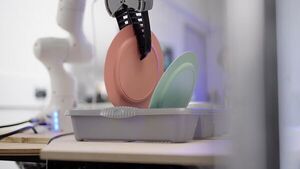
Dyson is working on ‘top secret’ robots that will do your household chores
"You might know Dyson for its sci-fi looking vacuum cleaners, futuristic-looking fans and its state-of-the-art hairdryers. But Dyson has been working on a secret project you probably do not know about and could realise a dream that humanity has been nurturing for decades now: robots. And not just any robot (you may already consider some of their vacuum cleaners as robots, from a technical perspective). Dyson has revealed that it is betting on the construction of robots that will be able to do household chores. The company expects the new technology to be available by 2030. Imagine mighty robotic hands gently picking up the dishes from the rack and setting up the table for lunch." [...]
Ciência e Tecnologia
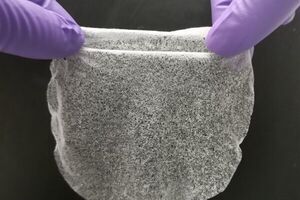
Low-Cost Gel Film Can Pluck Drinking Water From Desert Air
"More than a third of the world’s population lives in drylands, areas that experience significant water shortages. Scientists and engineers at The University of Texas at Austin have developed a solution that could help people in these areas access clean drinking water. The team developed a low-cost gel film made of abundant materials that can pull water from the air in even the driest climates. The materials that facilitate this reaction cost a mere $2 per kilogram, and a single kilogram can produce more than 6 liters of water per day in areas with less than 15% relative humidity and 13 liters in areas with up to 30% relative humidity. The research builds on previous breakthroughs from the team, including the ability to pull water out of the atmosphere and the application of that technology to create self-watering soil. However, these technologies were designed for relatively high-humidity environments." [...]

Finding coherence in quantum chaos
"Theoretical breakthrough creates path to manipulating quantum chaos for laboratory experiments, quantum computing and black-hole research A theoretical breakthrough in understanding quantum chaos could open new paths into researching quantum information and quantum computing, many-body physics, black holes, and the still-elusive quantum to classical transition. “By applying balanced energy gain and loss to an open quantum system, we found a way to overcome a previously held limitation that assumed interactions with the surrounding environment would decrease quantum chaos,” said Avadh Saxena, a theoretical physicist at Los Alamos National Laboratory and member of the team that published the paper on quantum chaos in Physical Review Letters. “This discovery points to new directions in studying quantum simulations and quantum information theory.” Quantum chaos differs from classical-physics chaos theory. The latter seeks to understand deterministic, or non-random, patterns and systems that are highly sensitive to initial conditions. The so-called butterfly effect is the most familiar example, whereby the flap of a butterfly’s wings in Texas could, through a bewilderingly complicated but not random chain of cause and effect, lead to a tornado in Kansas. On the other hand, quantum chaos describes chaotic classical dynamical systems in terms of quantum theory." [...]
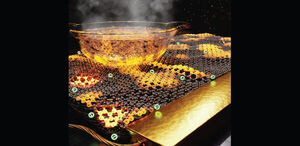
Carbon nanomaterials are hot property
"Graphitic thin films hit high temperatures within seconds under low voltage. Combining multiple carbon nanomaterials in a single substance can yield surprising properties. KAUST researchers have created thin graphite films that could act as high-performance flexible heater panels, reaching several hundred degrees within seconds when a small voltage is applied1. They also showed that the key to the material’s exceptional heating performance is graphene domains within the graphite film. As outstanding thermal conductors, graphitic carbon nanomaterials are increasingly used for heat management, for example, to dissipate heat from microchips. The same materials could also be used as electric heaters." [...]

Researchers unveil a secret of stronger metals
"Study shows what happens when crystalline grains in metals reform at nanometer scales, improving metal properties. Forming metal into the shapes needed for various purposes can be done in many ways, including casting, machining, rolling, and forging. These processes affect the sizes and shapes of the tiny crystalline grains that make up the bulk metal, whether it be steel, aluminum or other widely used metals and alloys. Now researchers at MIT have been able to study exactly what happens as these crystal grains form during an extreme deformation process, at the tiniest scales, down to a few nanometers across. The new findings could lead to improved ways of processing to produce better, more consistent properties such as hardness and toughness. The new findings, made possible by detailed analysis of images from a suite of powerful imaging systems, are reported today in the journal Nature Materials, in a paper by former MIT postdoc Ahmed Tiamiyu (now assistant professor at the University of Calgary); MIT professors Christopher Schuh, Keith Nelson, and James LeBeau; former student Edward Pang; and current student Xi Chen." [...]
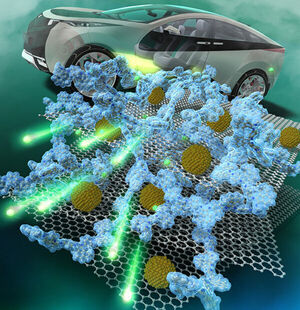
Charging a Green Future: Latest Advancement in Lithium-Ion Batteries Could Make Them Ubiquitous
"Scientists add a specific polymer composite to the silicon anode of lithium-ion batteries, which significantly increasing their lifetime Lithium-ion batteries (LIBs) power electric vehicles and electronics. With the prevalence of these set to increase, efforts have been directed towards improving the performance and longevity of LIBs. Now researchers from Japan Advanced Institute of Science and Technology have shown that adding a specific polymer composite binder to the silicon anode of LIBs can improve its structural stability significantly, making it viable for much more powerful, long-lasting LIBs, and changing the future of the technologies it drives. Think of a battery, and the term lithium-ion most likely comes to mind. Because of its light weight, high-energy density, and ability to deliver three times as much current as other types of rechargeable batteries, lithium-ion batteries (LIBs) have become the dominant type of battery in both low-power consumer electronic devices, such as mobile phones, and high-power applications, such as electric vehicles and energy storage. Any typical lithium-ion battery today consists of a positive electrode (cathode) made up of a lithium-containing compound, a negative electrode (anode) made up of graphite, and electrolyte--the layer in between the electrodes through which ions flow." [...]
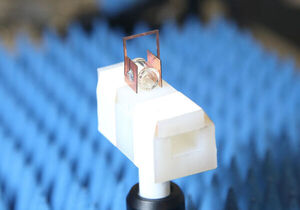
Custom ‘Headphones’ Boost Atomic Radio Reception 100-Fold
"Researchers at the National Institute of Standards and Technology (NIST) have boosted the sensitivity of their atomic radio receiver a hundredfold by enclosing the small glass cylinder of cesium atoms inside what looks like custom copper “headphones.” The structure — a square overhead loop connecting two square panels — increases the incoming radio signal, or electric field, applied to the gaseous atoms in the flask (known as a vapor cell) between the panels. This enhancement enables the radio receiver to detect much weaker signals than before. The demonstration is described in a new paper. The headphone structure is technically a split-ring resonator, which acts like a metamaterial — a material engineered with novel structures to produce unusual properties. “We can call it a metamaterials-inspired structure,” NIST project leader Chris Holloway said. NIST researchers previously demonstrated the atom-based radio receiver." [...]

When quantum particles fly like bees
"A quantum system consisting of only 51 charged atoms can assume more than two quadrillion different states. Calculating the system's behavior is a piece of cake for a quantum simulator. A research team from the University of Innsbruck and the Technical University of Munich (TUM) has now shown how these systems can be described using equations from the 18th century. At first glance, a system consisting of 51 ions may appear simple. But even if these charged atoms can only assume two different states, there will be more than two quadrillion (1015) different configurations which the system can realize. The behavior of such a system can therefore hardly be calculated with conventional computers." [...]

Manchester experts are designing AI-powered machines tough enough to work safely in hostile hotspots
"A new generation of smart robots is being developed at The University of Manchester that can be trusted to think and act for themselves in some of the most hazardous places on Earth - and beyond. ‘Hot robotic’ systems were originally designed to work in radioactive environments found in decommissioned nuclear reactors - but future assignments for this type of super machine will include deployment in nuclear fusion power, the offshore energy sector, agriculture and even outer space. As part of an ambitious R&D programme to maintain UK leadership in robotic technologies, Manchester experts are applying AI technologies to ‘hot robotics’ as they will increasingly need to act independently of human operators as they enter a range of danger zones to carry out highly complex tasks. An important challenge in the nuclear industry is to improve robot autonomy so that the technology can be used to deliver safer, faster and cheaper decommissioning of legacy power stations and other radioactive facilities at sites such as Sellafield and Dounreay. To support this challenge, the Robotics and AI Collaboration (RAICo) has been established in Cumbria as a joint research programme between The University of Manchester, the UK Atomic Energy Agency (UKAEA), Sellafield Ltd, the Nuclear Decommissioning Authority and the National Nuclear Laboratory. The aim is to develop advanced robotic and AI solutions and transferring these to sites across the Nuclear Decommissioning Authority’s estate in the UK." [...]
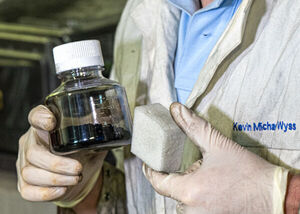
Cars could get a ‘flashy’ upgrade
"Flash Joule heating process recycles plastic from end-of-life F-150 trucks into high-value graphene for new vehicles The part of an old car that gets turned into graphene could come back as a better part for a new car. Rice University chemists working with researchers at the Ford Motor Company are turning plastic parts from “end-of-life” vehicles into graphene via the university’s flash Joule heating process. The average SUV contains up to 350 kilograms (771 pounds) of plastic that could sit in a landfill for centuries but for the recycling process reported in the debut issue of a new Nature journal, Communications Engineering. The goal of the project led by Rice chemist James Tour and graduate student and lead author Kevin Wyss was to reuse that graphene to make enhanced polyurethane foam for new vehicles. Tests showed the graphene-infused foam had a 34% increase in tensile strength and a 25% increase in low-frequency noise absorption. That’s with only 0.1% by weight or less of graphene." [...]

Electrons in a crystal exhibit linked and knotted quantum twists
"New experiments reveal an elaborate linked quantum structure. As physicists delve deeper into the quantum realm, they are discovering an infinitesimally small world composed of a strange and surprising array of links, knots and winding. Some quantum materials exhibit magnetic whirls called skyrmions — unique configurations described as “subatomic hurricanes.” Others host a form of superconductivity that twists into vortices. Now, in an article published in Nature a Princeton-led team of physicists has discovered that electrons in quantum matter can link one another in strange new ways. The work brings together ideas in three areas of science – condensed matter physics, topology, and knot theory – in a new way, raising unexpected questions about the quantum properties of electronic systems. Topology is the branch of theoretical mathematics that studies geometric properties that can be deformed but not intrinsically changed." [...]

Researchers Demonstrate Organic Crystals Can Serve as Energy Converters for Emerging Technologies
"For the first time, organic crystals are shown to be highly efficient dynamic materials, capable of meeting the energy conversion needs of advanced technologies. New research by a team of researchers at the NYU Abu Dhabi (NYUAD) Smart Materials Lab published today in the journal Nature Communications demonstrates that organic crystals, a new class of smart engineering materials, can serve as efficient and sustainable energy conversion materials for advanced technologies such as robotics and electronics. While organic crystals were previously thought to be fragile, the NYUAD researchers have discovered that some organic crystals are mechanically very robust. They developed a material that establishes a new world record for its ability to switch between different shapes by expansion or contraction over half of its length, without losing its perfectly-ordered structure. In the study titled Exceptionally High Work Density of a Ferroelectric Dynamic Organic Crystal around Room Temperature, the team, led by NYUAD Professor of Chemistry Panče Naumov, presents the process of observing how the organic crystalline material reacted to different temperatures. The researchers found that the organic crystals were able to reversibly change shape in a similar manner to plastics and rubber." [...]

Unique Quantum Material Could Enable Ultra-powerful, Compact Computers
"Columbia chemists and physicists find a link between tunable electronic and magnetic properties in a 2D semiconductor, with potential applications in spintronics, quantum computing, and fundamental research. Information in computers is transmitted through semiconductors by the movement of electrons and stored in the direction of the electron spin in magnetic materials. To shrink devices while improving their performance—a goal of an emerging field called spin-electronics (“spintronics”)—researchers are searching for unique materials that combine both quantum properties. Writing in Nature Materials, a team of chemists and physicists at Columbia finds a strong link between electron transport and magnetism in a material called chromium sulfide bromide (CrSBr). Created in the lab of Chemist Xavier Roy, CrSBr is a so-called van der Waals crystal that can be peeled into stackable, 2D layers that are just a few atoms thin. Unlike related materials that are quickly destroyed by oxygen and water, CrSBr crystals are stable at ambient conditions." [...]
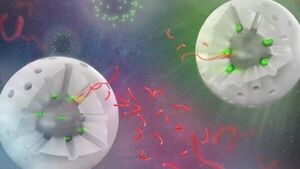
A unique catalyst paves the way for plastic upcycling
"A recently developed catalyst for breaking down plastics continues to advance plastic upcycling processes. In 2020, a team of researchers led by Ames Laboratory scientists developed the first processive inorganic catalyst to deconstruct polyolefin plastics into molecules that can be used to create more valuable products. Now, the team has developed and validated a strategy to speed up the transformation without sacrificing desirable products. The catalyst was originally designed by Wenyu Huang, a scientist at Ames Lab. It consists of platinum particles supported on a solid silica core and surrounded by a silica shell with uniform pores that provide access to catalytic sites. The overall amount of platinum needed is quite small, which is important because of platinum's high cost and limited supply." [...]
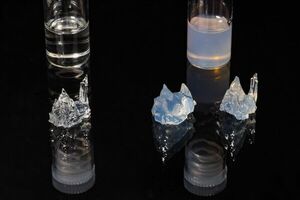
Objects can now be 3D-printed in opaque resin
"A team of EPFL engineers has developed a 3D-printing method that uses light to make objects out of opaque resin in a matter of seconds. Their breakthrough could have promising applications in the biomedical industry, such as to make artificial arteries. Back in 2017, engineers at EPFL’s Laboratory of Applied Photonic Devices (LAPD), within the School of Engineering, designed a 3D printer capable of fabricating objects almost instantaneously. Now, five years later, the team has improved their printing machine and method, and can produce objects made out of opaque resin – something that was never before possible. A tiny Yoda EPFL’s 3D printer is one of the fastest in the world. Whereas most 3D printers work by depositing a material layer by layer in a process known as additive manufacturing, the EPFL one uses a volumetric method." [...]

A quantum drum that stores quantum states for record-long times
"Researchers at the Niels Bohr Institute, University of Copenhagen, have improved the coherence time of a previously developed quantum membrane dramatically. The improvement will expand the usability of the membrane for a variety of different purposes. With a coherence time of one hundred milliseconds, the membrane can for example store sensitive quantum information for further processing in a quantum computer or network. The result has now been published in Nature Portfolio. The quantum drum is now connected to a read-out unit As a first step, the team of researchers has combined the membrane with a superconducting microwave circuit, which enables precise readouts from the membrane. That is, it has become “plugged in”, as required for virtually any application." [...]
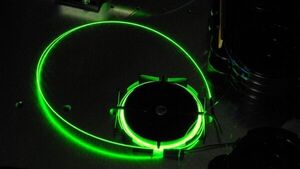
Secure communication with light particles
"Researchers at TU Darmstadt are developing an anti-eavesdropping quantum network While quantum computers offer many novel possibilities, they also pose a threat to internet security since these supercomputers make common encryption methods vulnerable. Based on the so-called quantum key distribution, researchers at TU Darmstadt have developed a new, tap-proof communication network. Their results have now been presented in the renowned journal “PRX Quantum”. The new system is used to exchange symmetric keys between parties in order to encrypt messages so that they cannot be read by third parties. In cooperation with Deutsche Telekom, the researchers led by physics professor Thomas Walther succeeded in operating a quantum network that is scalable in terms of the number of users and at the same time robust without the need for trusted nodes. In the future, such systems could protect critical infrastructure from the growing danger of cyberattacks." [...]

Scientists make plastic more degradable under UV light
"Scientists at Bath found that incorporating sugar units into polymers makes them more degradable when exposed to UV light. Many plastics that are labelled as biodegradable are only compostable under industrial conditions, but scientists at the University of Bath have now found a way to make plastics break down using only UV light. As a result of increasing public concern over plastic waste, PLA (Poly(lactic acid)), created using lactic acid from the fermentation of sugars, is now widely used as a renewable, sustainable alternative to plastics derived from crude oil products - used in everything from disposable cups and teabags to 3D printing and packaging. It is often labelled as biodegradable, however it has limited degradability in natural environments, for example in soil or in seawater, and it only degrades under industrial composting conditions of high temperatures and humidity – not achievable in domestic compost heaps. Now scientists at the Centre for Sustainable and Circular Technologies (CSCT) at the University of Bath have developed a way that could make these plastics more degradable in the natural environment. The team found that they can tweak the degradability of the plastic by incorporating different amounts of sugar molecules into the polymer." [...]
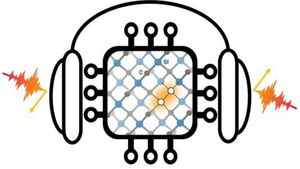
Argonne scientists use quantum computers to simulate quantum materials
"Scientists achieve important milestone in making quantum computing more effective. Quantum computers promise to revolutionize science by enabling computations that were once thought impossible. But for quantum computers to become an everyday reality, there is a long way to go and many challenging tests to pass. One of the tests involves using quantum computers to simulate the properties of materials for next-generation quantum technologies. In a new study from the U.S. Department of Energy’s (DOE) Argonne National Laboratory and the University of Chicago, researchers performed quantum simulations of spin defects, which are specific impurities in materials that could offer a promising basis for new quantum technologies. The study improved the accuracy of calculations on quantum computers by correcting for noise introduced by quantum hardware." [...]

FSU researchers collaborate with business to develop next-generation superconducting
"Researchers at Florida State University’s Center for Advanced Power Systems (CAPS), in collaboration with Colorado-based Advanced Conductor Technologies, have demonstrated a new, ready-to-use superconducting cable system — an improvement to superconductor technology that drives the development of technologies such as all-electric ships or airplanes. In a paper published in Superconductor Science and Technology, the researchers demonstrated a system that uses helium gas for crucial cooling. Superconducting cables can move electrical current with no resistance, but they need very cold temperatures to function. “We want to make these cables smaller, with lower weight and lower volume,” said paper co-author Sastry Pamidi, a FAMU-FSU College of Engineering professor and CAPS associate director. “These are very efficient power cables, and this research is focused on improving efficiency and practicality needed to achieve the promise of next-generation superconductor technology.” Previous work showed that the body of superconducting cables could be cooled with helium gas, but the cable ends needed another medium for cooling, such as liquid nitrogen. In this paper, researchers overcame that obstacle and were able to cool an entire cable system with helium gas." [...]

Emulating impossible ‘unipolar’ laser pulses paves the way for processing quantum information
"Quantum materials emit light as though it were only a positive pulse, rather than a positive-negative oscillation. A laser pulse that sidesteps the inherent symmetry of light waves could manipulate quantum information, potentially bringing us closer to room temperature quantum computing. The study, led by researchers at the University of Regensburg and the University of Michigan, could also accelerate conventional computing. Quantum computing has the potential to accelerate solutions to problems that need to explore many variables at the same time, including drug discovery, weather prediction and encryption for cybersecurity. Conventional computer bits encode either a 1 or 0, but quantum bits, or qubits, can encode both at the same time. This essentially enables quantum computers to work through multiple scenarios simultaneously, rather than exploring them one after the other." [...]
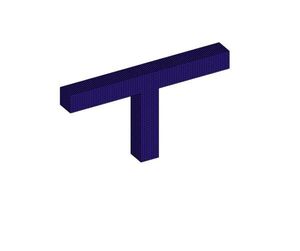
Dancing In The Light
"University of Pittsburgh Distinguished Professor Anna Balazs collaborated with senior author Joanna Aizenberg, the Amy Smith Berylson Professor of Materials Science and Professor of Chemistry & Chemical Biology at SEAS at Harvard on research published in Nature. Mastering control over the dynamic interplay among optical, chemical and mechanical behavior in single-material, liquid crystalline elastomers, results in microposts that combine bending, twisting and turning into complex dances. The advancement could contribute toward further development of soft robotics and other devices. When humans twist and turn it is the result of complex internal functions: the body’s nervous system signals our intentions; the musculoskeletal system supports the motion; and the digestive system generates the energy to power the move. The body seamlessly integrates these activities without our even being aware that coordinated, dynamic processes are taking place. Reproducing similar, integrated functioning in a single synthetic material has proven difficult –few one-component materials naturally encompass the spatial and temporal coordination needed to mimic the spontaneity and dexterity of biological behavior." [...]

A good defect? Researchers discover helicoidal screw dislocations in layered polymers
"Dr. Edwin L. Thomas, professor in the Department of Materials Science and Engineering, a team of researchers from Texas A&M University and Yonsei University recently discovered a helicoidal-shaped defect in layered polymers, uncovering how solvents can rapidly diffuse through layers and produce color changes. This research was recently published in Science Advances. In some human-interactive electronics, such as temperature gauges or health sensors, polymers are used that are capable of changing color depending on stimuli. This phenomenon is referred to as stimuli-interactive structural colors because the material reacts and changes color due to environmental changes, such as temperature, the presence of a solvent or solution. A material that has a one-dimensional periodic structure comprised of two (A and B) layers acts like a photonic crystal and can reflect light of a given wavelength (color) depending on the thickness of each layer. Stimuli-interactive structural color works by altering photonic crystals using external stimuli or forces." [...]
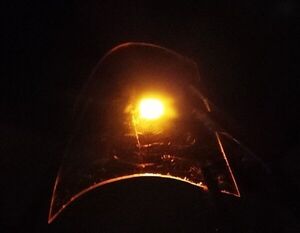
A candlelight-like glow from a flexible organic LED
"Giving off a comfortable glow, candles set the ambiance for a special dinner or just a quiet evening at home. However, some lighting alternatives, such as electronic candles, give off unwanted blue wavelengths that interfere with the body’s circadian rhythm. Now, researchers reporting in ACS Applied Electronic Materials have fabricated an improved bendable organic LED that releases candlelight-like light for flexible lighting and smart displays that people can comfortably use at night. Previously, Jwo-Huei Jou and other researchers developed organic LEDs that released warm-white light, similar to that produced by candles. However, the devices still emitted some blue wavelength light, which can interfere with sleep because it dampens the body’s production of melatonin. These devices were made of solid materials and weren’t flexible." [...]

Planets of binary stars as possible homes for alien life
"PLANETS Nearly half of Sun-size stars are binary. According to University of Copenhagen research, planetary systems around binary stars may be very different from those around single stars. This points to new targets in the search for extraterrestrial life forms. Since the only known planet with life, the Earth, orbits the Sun, planetary systems around stars of similar size are obvious targets for astronomers trying to locate extraterrestrial life. Nearly every second star in that category is a binary star. A new result from research at University of Copenhagen indicate that planetary systems are formed in a very different way around binary stars than around single stars such as the Sun." [...]

The limits of vision: seeing shadows in the dark
"A dedicated neural circuit in the retina detects shadows even in near-complete darkness Mice use a specific neural pathway to detect shadows, and it can detect just about the dimmest shadows possible, according to new research from Aalto University and the University of Helsinki. The human eye has the same neural circuit, which researchers think could be used to probe visual diseases at unprecedented resolution. To test shadow detection, the researchers put mice in a maze with nearly no light. The exit was marked by a black spot, just barely distinct from the surrounding darkness. By tracking how the mice moved through the maze and measuring the activity of neurons at the back of the eye – the retina – the team showed that a group of retinal cells known as OFF ganglion cells detected the extremely small dip in light levels. ‘Our goal is to go from molecules all the way up to behaviour,’ says Professor Petri Ala-Laurila, who holds a joint appointment at Aalto and the University of Helsinki." [...]
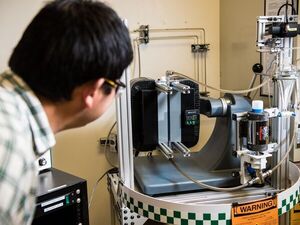
Tri-Cities Scientists ‘Magically’ Mining Metals From Water
"Centuries ago, alchemists tried to turn lead into gold. While they were not successful, the prospect of coaxing valuable materials from abundant sources remains tantalizingly attractive. Today, scientists at the Department of Energy’s Pacific Northwest National Laboratory are working with industry to test an approach that uses magnetic nanoparticles to capture critical materials, such as lithium, from various water sources. Lithium is an essential ingredient in many electronic and energy technologies, including the lightweight lithium-ion batteries that power everything from cell phones to electric vehicles. The global market for lithium is projected to reach $8.2 billion by 2028, but precious little is produced in the United States. Not only does PNNL’s patent-pending technology potentially give the U.S. an opportunity to produce more of its own lithium and other critical materials, but it also offers a much faster and less expensive way of doing so." [...]

Long-hypothesized ‘next generation wonder material’ created for first time
"CU Boulder scientists have successfully synthesized graphyne, which has been theorized for decades but never successfully produced For over a decade, scientists have attempted to synthesize a new form of carbon called graphyne with limited success. That endeavor is now at an end, though, thanks to new research from the University of Colorado Boulder. Graphyne has long been of interest to scientists because of its similarities to the “wonder material” graphene—another form of carbon that is highly valued by industry whose research was even awarded the Nobel Prize in Physics in 2010. However, despite decades of work and theorizing, only a few fragments have ever been created before now. This research, announced last week in Nature Synthesis, fills a longstanding gap in carbon material science, potentially opening brand-new possibilities for electronics, optics and semiconducting material research. “The whole audience, the whole field, is really excited that this long-standing problem, or this imaginary material, is finally getting realized,” said Yiming Hu (PhDChem’22), the lead author on the paper." [...]
Documentação
A documentação é parte essencial do processo de aprendizagem e a Internet além de artigos interessantes de explorar também tem alguma documentação em formato PDF interessante de ler. Todos os links aqui apresentados são para conteúdo disponibilizado livremente pelo editor do livro.

HackSpace magazine #55
"There’s a huge range of computer-controlled machines used by makers – 3D printers, laser cutters, CNC mills and more – but the plotter is the easiest to make. This makes it a great build for getting started in the world of computer-controlled machines. For around £15 you can create your own drawing machine with our guide - Learn how hydraulics work - All you need to know about lubrication - Make your own Guitar-Hero style controller - And much more" [...]

The MagPi 118
"Inside The MagPi magazine #118 - Raspberry Pi Photography. Set up a Camera Module and build image-based projects. Capture, edit and adjust images with code and read through our time-lapse and batch-convert tutorials. - Craft wearable kit. Use tiny computers and microcontrollers to make tech projects you can carry around. - Make your own SpecDeck." [...]
Projetos Maker
Diversos Projetos interessantes.

Designing a programmable sound generator board
"I've recently been getting into chiptunes, including both writing music as well as programs to generate the sounds that play the music. My interest in sound generation goes back to 2018, when I wrote a small library for TI-84 calculators to control playback of 16 channels across four wave types on a connected Arduino, and later Raspberry Pi. The system was initially very primitive - it could only use sine, triangle, square, and sawtooth waves, and was only able to control the volume and frequency of the output. It also relied on PWM output through an RC filter, which sounded pretty crappy (but worked). Later versions added support for 8-bit PCM audio at 8000 Hz, but due to the space constraints of the TI-84, I could only store a few seconds of audio, even at such a crappy quality. About two years later, I decided to expand on this a little bit." [...]
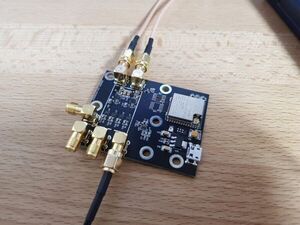
An ESP32 based RF antenna matrix
"Playing around with SDRs for more than 14 years now, I learnt a lot. Not on a very professional level, but on a hobbyist niveau. I went through developing some firmware for the CY7C68013A, a framework for transferring IQ data from SDRs to processing modules, implemented a spectrum analzer UI, demodulators for all kinds of protocols like GSM or POCSAG, etc etc. But apart from building cables I never was tinkering with the RF path itself. Neither do I have an amateur radio license, nor did I really design RF hardware. The latter is something I wanted to change and finally did." [...]
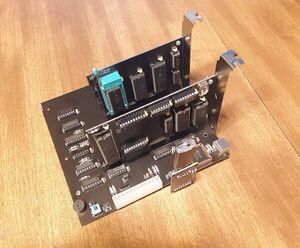
Homebrew 8088
"This web page is dedicated to my 8088 Motherboard project. The Motherboard is built to be generally PC XT compatible. The schematics and source code can be found on my GitHub page. Features: -8088, NEC V20, OR NEC V40 Processor -512k RAM (This can be changed) -8 Bit ISA sockets (4 slots or 7 slots) -PC Speaker -USB "Hard Drive" -PS/2 Keyboard -ATX form factor -Add on DMA controller (7 slot ISA only) " [...]
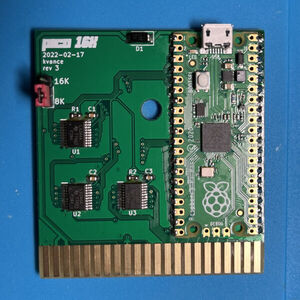
Commodore 64 to Raspberry Pi Pico RAM interface
"This project exposes a 16 KiB window of a Raspberry Pi Pico's RAM to a Commodore 64 via the expansion port. It includes a hardware design and software for the Pico C++ SDK. The Hardware Schematic, PCB, and project files are in KiCad 6 format. 5V power from the expansion port is used to power the Pico. As suggested in the Pico datasheet, a Schottky diode allows the Pico to be connected to powered USB at the same time. 8-bit buffers bring the 5V logic levels on the address and data bus down to 3.3V to protect the Pico's GPIO pins." [...]

DIY Pan Tilt Control Using Servos for ESP32 Cam
"Tilt Control Using Servos for ESP32 Cam ! WiFi Security Camera This guide will show you how to use two servos to create a pan-tilt control for the ESP32-CAM. The ESP32 Cam is a small camera that can be used to take pictures and videos. The servo is used to pan and tilt the camera. This can be used to create a security camera, a robotic eye, or anything else you can think of. We will also show you how to use a web interface to control the camera." [...]
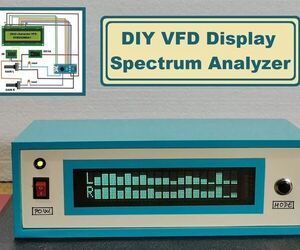
DIY Arduino Audio Spectrum Analyzer on VFD Display
"A spectrum analyzer is a measurement tool that displays real-time frequency analysis of incoming audio signals. It is usually an integral part of equalizers and audio signal processing devices. The vertical axis shows the amplitude of certain frequencies measured in decibels. Supplies The presented device is very simple to build, and consists of several components: - Arduino nano microcontroller - VFM202MDA1-1 type VFD Display wich is slightly modified - Stereo potentiometer to control the intensity of the input signal - and two capacitors" [...]
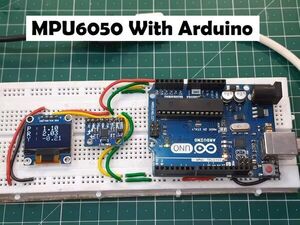
MPU6050 Gyroscope with Arduino
"A small but very optimised 3 axis accelerometer, 3 axis gyroscope having inbuilt temperature sensor. Let's pair it with Arduino. Three Axis gyroscope sensors are very useful in making like flight controllers, ship/boat controllers, direction prediction and controlling the Microcontroller accordingly. In today’s tutorial, we will discuss about MPU6050 gyro sensor and make a small project to know the functionality. Which can show Pitch, yaw and roll readings on display. Gyroscope sensor is a device that can measure and maintain the orientation and angular velocity of an object." [...]

Simple Remote Air Quality Monitor Project Tutorial
"Good ventilation improves people's quality of life. In this tutorial I present how to build a simple air quality monitor to improve your ventilation routines. It is a simple remote Air Quality monitor with an Arduino Nicla Sense ME board as a sensor and an Arduino Nano 33 IoT as a monitoring system. A common problem with portable air quality sensors is that the sensors are too close to the person observing them, which adds noise to the readings with their breathing. In this project we solve the problem by means of a remote monitor that communicates via Bluetooth with the distant sensor. The system is made up of a Nicla Sense ME board that will act as a remote sensor and an Arduino Nano 33 IoT board and a color TFT LCD display that will allow us to view the data in real time." [...]

MacroPad - Macro Keyboard
"The MacroPad is a Raspberry Pi PICO based Micropython macro keyboard. I features a SD card that can hold multiple macro sets for each program you load on the card. Each TXT file can map a caption, color, and series of key strokes to one key. It also contains the macro set name and global color for the keys. You can press the dedicated button to select the macro set held on the SD card and alter the key/screen brightness. Supplies - 3D model can be found and downloaded here: Printables Link - 1 Adafruit NeoKey 5x6 - 1 Raspberry Pi RP2040 - 8 Clear Keycaps - 8 Cherry MX key switches - 1 SD Card Reader - 1 SD Card - 1 16mm momentary button - 1 OLED display - 4 Rubber feet - 2 M3 x 8 (Display mount) - 4 M2.5 x 8 (Display and Cover) - 4 M3 x 12 (Bottom to Top connection) - 2 M2.5 x 6 (SD Card Reader) - 2 M3 x 4 (Key matrix mount) - 4 M1.7 x 4 screws (RP Pico mount)" [...]

PasswordVault on Seeed Studio Wio Terminal
"A cute open hardware device with open source software to store your passwords securely and type them PasswordVault on Seeed Studio Wio Terminal is designed by Dr. Olav Schettler in Germany, and it's available on Tindie. If you like the project, welcome to order one for yourself on Tindie. Please do note the following description comes originally on Dr. Olav Schettler's Tindie page. You can also connect with Dr. Olav on Twitter. What is it? PasswordVault is an open-source application written in Arduino C++ that securely stores your passwords and types them into any website or service you use on any tablet or computer." [...]
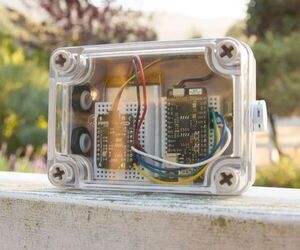
Tiny ESP8266 IoT Weather Station (Weatherproof)
"Have you ever wanted to build a compact ESP8266 IoT weather station that can survive rain or shine? If so, this Instructable is for you! This weather station can display data about your indoor/outdoor environment on your smartphone or computer using Blynk, an IoT platform. In addition, the weather station can log data locally on a micro SD card and keep track of time. This guide uses a small multipurpose sensor development board called SENSE that can gather over 20 data variables including air quality, sound, light, temperature, proximity, and more. Supplies - NodeMCU ESP8266 - SENSE Multipurpose Sensor Development Board (available on Kickstarter) - Weatherproof Enclosure - (X3) Screw Vent (these allow fresh air to flow through the enclosure while keeping the weather seal) - Micro SD Card (Less than 32 GB and formatted to FAT32) - Qwiic Cable - Jumper Wires - (X2) Mini Breadboard - 5V Powerbank or LiPo Battery (If your microcontroller has JST connector)" [...]
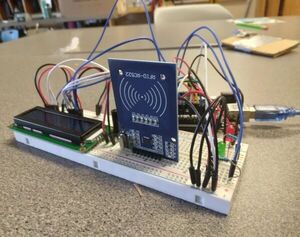
RFID Blocking - How Secure Are Our RFID Cards? How Can We Protect Them Further? - an Experiment
"NOTE: Vocab RFID Reader - The box-like object that can be activated by an RFID tagRFID Tag/RFID Card - The card or tag that activates the reader. I took apart one and is displayed in the pictures above. RFID System - The tag and the reader work together.Electromagnetic Waves - A wave that contains both electric and magnetic waves that are traveling on the same frequency and are perpendicular to each other.EMC - Electromagnetic current.EMC Shielding - blocks, reflects, and/or absorbs an electromagnetic current. This is an RFID blocking experiment where you test out multiple ways to protect your RFID credentials. RFID is everywhere these days, it's in credit cards and phones for the tap to pay like Apple Pay and Google Pay. However, it is most commonly used by hotels, businesses, and schools as access cards." [...]

stm32 HiFi usb sound card DIY
"Black /Green pill stm32f401 , high quality, low noise DAC based on 2 PWM timer channels with virtual software Sigma Delta ADC. DIY about $3-$9 (depends number of displays) low cost solution Software low noise DAC based on 2 PWM timer channels with virtual soft Sigma Delta ADC between stream from usb and PWM output. There is implemented "sigma-delta floating point encoder" workaround of native stm32f401 limit 10.5 bits on 44100 Hz (1904 levels=84MHz/44.1KHz ) So, we can have for only $3 ,very low noise , high sound quality solution, which better then most onboard sound cards ! There is implemented virtual software second order sigma delta adc for the shift quantization noise to high frequency. see here (it provide useful links at the end): https://www.analog.com/media/en/training-seminars/tutorials/MT-022.pdf But instead one bit ( two levels ) i use more bits (0-MAX_LEVELS) Same technology can be used for esp32 high quality sound rendering. stm32f401cdu6 version https://github.com/sdima1357/stm32f401cdu6_Audio stm32f401ccu6 version https://github.com/sdima1357/stm32f401ccAudioNative" [...]

Arduino Nano Quadcopter
"This is Arduino based and 3D printed nano quadcopter which flies on DC brushed motors. The name nano comes from the fact that the project is based on Arduino nano, which I think is one of the most successful dev boards ever made. This project isn't just another Hey - look what a cool thing I made, it is instead aimed at analysing and understanding the design decisions which need to be made when designing a quadcopter, thus it will be a bit lengthy. However if you want to understand quadcopters from the bottom up - stay with me! When I initially started working on the project (a shame to say - years ago...) I went along with Bluetooth 2.0 module as this was popular back then, however years passed by and many more Arduino modules got developed. Recently, I noticed that a couple more different nano modules such as BLE-Nano and RF-Nano (nRF24L01) are cheaply available on Aliexpress so I decided to revive this project and finally complete it." [...]

Raspberry Pi Music Server
"Today I will show you how to create your own Raspberry Music Server. I designed my Music Server with two goals in mind, To have a fast, fully functional Music Server To make it look as aesthetically pleasing as possible without sacrificing functionality. In this Instructable, I will lay out what materials I used, the design process, the steps to follow, as well as some improvements for the future. Let's dive in! Tools: - Jigsaw or a Router - Pine Wood 3"x21" - 3d Printer - Sandpaper with grits of 120, 220, 400 - Drill - 1-inch Drill bit - Fusion 360 - 3d Printer - Flame Torch - Dremel - 3mm Drill bit - Table Saw(You can probably use a circular saw) - Vice - 3" Wide Metal Pipe - Metal Clamp - Brasso - Thick Rosin Core Solder Materials: - PETG Filament - 0.025x2x12 Inch Brass x3 - Pine Wood at least 25 inches Long - Raspberry Pi 0W - Pimoroni Pirate Audio 3W Speaker Amp - Speaker Spikes and Screw Mounts - Pimoroni 3W Speakers x2 - M2x20mm Hex Nuts and Bolts x2 - Left Angled Micro USB Male to Micro USB Female - SD Card - Raspberry Pi Female Header - Screws - M3x30mm Nuts and Bolts x4" [...]
Secção Videos
Videos interessantes.
That's all Folks!



